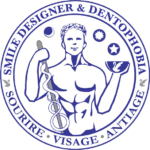FREQUENTLY ASKED QUESTIONS
about stomatophobia
AND PAIN-FREE CARE
get answers to your questions
written by our dentists
feel free to ask other questions
FREQUENTLY ASKED QUESTIONS ABOUT DENTAL PHOBIA AND PAINLESS CARE
To overcome the fear of the dentist and to treat the teeth, there are two strategies: either the help of anaesthetists or psychiatrists.
FEAR OF THE DENTIST: MANAGING DENTAL PHOBIAS: FREQUENTLY ASKED QUESTIONS
The dentist answers your most frequently asked questions. If your clinical case is not listed, please contact him for a consultation.
In industrialized countries, 6 to 14% of the population have a phobia of the dentist or stomatophobia.
These patients are often afraid of the dentist because of a traumatic experience in a dental office during their childhood.
They need and want to see a dentist because they are in pain and their teeth may be almost completely destroyed. But despite the pain, they do not manage to get treatment because they are traumatized and they are too afraid of the dentist. Symptoms related to dental phobia such as paralysis, choking, sweating, nausea, prevent these patients from going to the dentist.
The phobia of the dentist is only a problem when you need to have your teeth treated.
There are two ways to see a dentist when you have a phobia of the dentist:
1/ Consult a psychiatrist or psychologist who treats behavioral problems and then go see a dentist if the problem is resolved. It is a long, moderately effective solution that requires a great deal of effort on one’s part to overcome one’s phobia of the dentist. This solution does not allow for the treatment of emergency dental care.
2/ Consult a dentist who treats his patients suffering from dental phobia under sedation, neuroleptic analgesia or general anesthesia.
The doctor gets around the problem of phobia of the dentist by offering a sedation or anesthesia solution. The problem of the phobia of the dentist, even if it is not solved psychologically, no longer exists and is therefore no longer an obstacle to dental care since the patient is no longer aware of the treatments that the dentist is providing.
This solution is the fastest and most effective way to treat the patient’s teeth even with heavy treatments while his or her phobia of the dentist as such is not treated.
Nausea is an unpleasant feeling of wanting to vomit.
Vomiting is the release of stomach contents through the mouth. It corresponds to a mechanical reflex of defense of the body intended to empty, by the active rejection by the mouth, a part of the contents of the stomach.
It is a protective action of the organism which aims to protect it against the ingestion of toxic substances or considered as such by the mind.
It is different from regurgitation which is passive and is a simple ascent of the gastric contents towards the back of the throat or the oral cavity.
The mechanism of vomiting is essentially of central origin: in the brainstem is the vomiting center receiving information from the cortex, from the pressure of the cerebral ventricles, from the viscera and from an area of chemoreceptors. It sends efferences to the digestive tract, more particularly to the duodenum.
Vomiting is sometimes accompanied by heart rhythm disturbances, cold sweats, pallor, hyper-salivation, abdominal pain and diarrhea.
It is possible to vomit food, bile or, much more rarely, blood.
Vomiting can be spontaneous or triggered by either mechanical or psychological stimuli.
The action of the dental surgeon in the patient’s mouth can cause nausea and vomiting reactions:
- Either for psychological reasons of fear of the dentist or rejection of the invasion of the mouth by a foreign body that the patient perceives as an “enemy”.
- Either for reasons of mechanical hyper-sensitivity of the reflexogenic zones of swallowing which indirectly provoke a vomiting reaction.
In fact, swallowing involves the reflex activation by tactile, thermal and chemical stimulations of the posterior part of the tongue and the posterior part of the oropharynx innervated by the glossopharyngeal nerve (IX), of the anterior pillars of the soft palate innervated by the vagus nerve (X), of the posterior wall of the pharynx (reflexogenic zone of Wassilieff) innervated by the vagus nerve (X).
The tactile stimulation of the oropharynx, the gustatory stimuli of the pharynx and the water of the larynx generated by the dental care protocols provoke a swallowing reflex, then choking and finally nausea and eventually vomiting.
Nausea reflexes at the dentist’s office that deal with the phobia of the dentist are only a problem when you have to have your teeth treated. There are different solutions to get treatment when you have this kind of reflex:
1/ If the nausea problem is only due to a mechanical stimulation problem:
- It is possible, thanks to a very extensive local anesthesia, to slow down the perception of stimuli and thus reduce the choking reflexes.
- If this is not enough, it is possible to consult a dentist who treats his patients under sedation, neuroleptic analgesia or general anesthesia. The problem of nausea no longer exists since there is no longer any perception of stimuli and therefore no longer an obstacle to dental care. The patient is no longer aware of the treatments that the dentist is providing.
This solution is the fastest and most effective way to treat the patient’s teeth even with heavy treatments while his “nausea” as such is not treated.
2/ If the problem is psychological or related to a phobia of the dentist:
- It is possible to consult a specialist psychiatrist or psychologist who treats dental phobia disorders and then calmly go to a dentist if the fear of the dentist is resolved.
It is a long, moderately effective solution that requires a great deal of effort on your part to overcome your fear of the dentist. - It is possible to consult a dentist specializing in dental phobia who treats his patients under sedation or neurolept-analgesia or general anesthesia. The problem of nausea, even if it is not resolved psychologically, no longer exists and is therefore no longer an obstacle to dental care since the patient is no longer aware of the treatments that the dentist specializing in dental phobia is providing.
This solution is the fastest and most effective way to treat the patient’s teeth even with heavy treatments while his or her phobia of the dentist as such is not treated.
The different techniques involve protocols used by medicine and more specifically by aesthetic medicine, general surgery and cosmetic surgery. It is more specifically conscious sedation, neuroleptic analgesia and general anesthesia.
What is conscious sedation at the dentist?
Sedation (from the Latin: sedatio) is a calming by means of a sedative administered either per os(oral sedation) or by inhalation (MEOPA). Conscious sedation assumes that the patient remains conscious. Sedation has no anesthetic purpose: anesthesia is only obtained with local anesthetics.
An oral surgery or dental care procedure is impossible with conscious sedation alone, without local anesthesia.
Dental anesthesias are of two classes:
1/ Local or loco-regional anesthesia by injection of anesthetics into the connective tissue.
These techniques allow you to numb only the part of your body on which the operation will take place. Its principle is to block the nerves of this region by injecting a local anesthetic in their proximity. They can be optimized by conscious sedation
2/ General anesthesia in the operating room clinic.
General anesthesia, or GA, is a medical procedure whose main objective is the temporary and reversible suspension of consciousness and pain sensitivity, achieved with the help of medications (anesthetic drugs) administered intravenously and/or inhaled.
Neuroleptic-analgesia, or better yet benzanalgesia, is a method of intravenous anesthesia that combines an analgesic (a drug that acts against pain) with a neuroleptic, or a benzodiazepine (a drug that has a sedative effect on the nervous system).
It is completed by a local or loco-regional anesthesia that allows, through different techniques, to insensitize only the part of your body on which the operation will take place. Its principle is to block the nerves of this region by injecting a local anesthetic in their proximity.
It is possible to perform dental care or oral surgery under general anesthesia in the operating room of a surgical clinic. Of course, this major procedure must be justified for specific reasons and a pre-operative consultation with the anesthesiologist is mandatory.
Any medical act, even when performed with competence and in accordance with the latest scientific knowledge, always involves a risk. The contraindications, apart from the dental indication or non-indication, are related to the general health of the patient. The pre-anesthetic consultation by an anesthesiologist is a legal obligation. At the end of this visit, a mode of anesthesia is defined according to the patient’s state of health, the results of any additional tests that may have been prescribed and the surgical procedure. The final choice is the decision and responsibility of the anesthesiologist who will perform the anesthesia.



